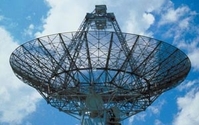 It became
obvious early on that Google's Project Loon and its acquisition of robotics and hardware companies eventually would lead it to build satellites that bring Internet connectivity to people in countries
without. The satellites would provide encrypted signals similar to the way aerospace companies like Boeing and McDonell Douglas launched satellites in orbit to stream video for commercial and military
applications.
It became
obvious early on that Google's Project Loon and its acquisition of robotics and hardware companies eventually would lead it to build satellites that bring Internet connectivity to people in countries
without. The satellites would provide encrypted signals similar to the way aerospace companies like Boeing and McDonell Douglas launched satellites in orbit to stream video for commercial and military
applications.
Google's Project Loon uses high-altitude balloons to bring Internet access to remote areas of the world, and to create an uninterrupted Internet signal in the Southern
Hemisphere. Using the billions the company has in overseas banks, the next investment should become a manufacturing facility to build hardware, from mobile phones and tablets to robotics, drones and
satellites. The move also would set up Google to provide military contracts, as well as commercial.
The Wall Street Journal reports that satellite-communications founder O3bNetworks
Greg Wyler will reportedly lead the project and a team of about 20 people. He will report directly to Larry Page. And while the WSJ detailed Google's plan to spend more than $1 billion to
build 180 satellites on the project, it fails to explore the possibilities this new endeavor will bring to manufacturing.
Having its own satellite transmission service would put Google into
another communications category and make it easier for the company to build technology from the ground up that would allow brands to insert advertisements into streaming transmission. Google would
either need to acquire or build the technology. I'm not aware that this technology exists today, but if any readers are familiar, please chime in.
Where will Google manufacture the 180
satellites -- and will it use the extra cash flow stashed worldwide to diversify its portfolio of products? Building satellites would not only give Google control of production and security, but
the ability to stream data, music, and movies to cars, televisions, and other portable or stationary devices we have yet to know that also support satellite TV and radio. Ads that will monetize the
services, including Google Fiber, could become available soon in Portland, San Jose, Salt Lake City, Phoenix, San Antonio, Nashville, Atlanta,
Charlotte, and Raleigh-Durham within the next five years.
By the way, half of this analysis is truth, and the other half is pure speculation on my part.